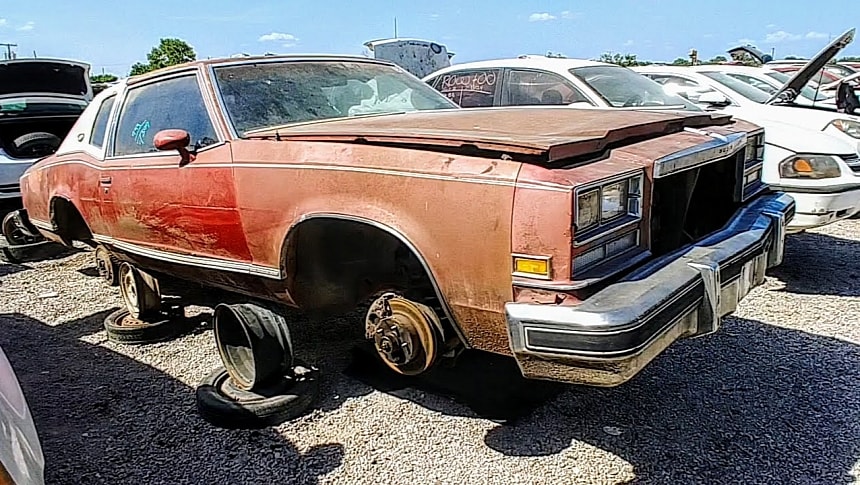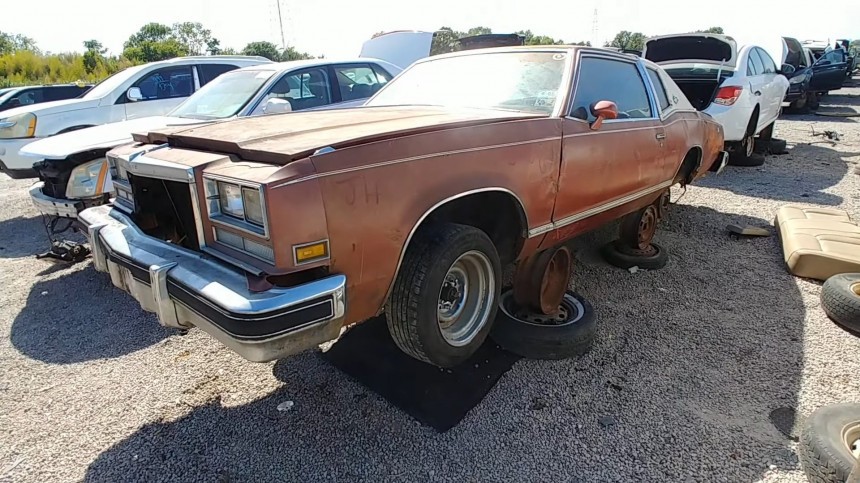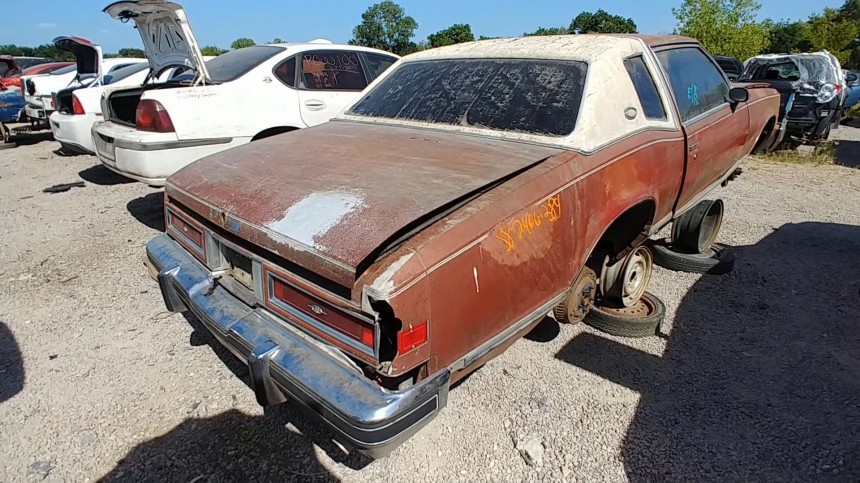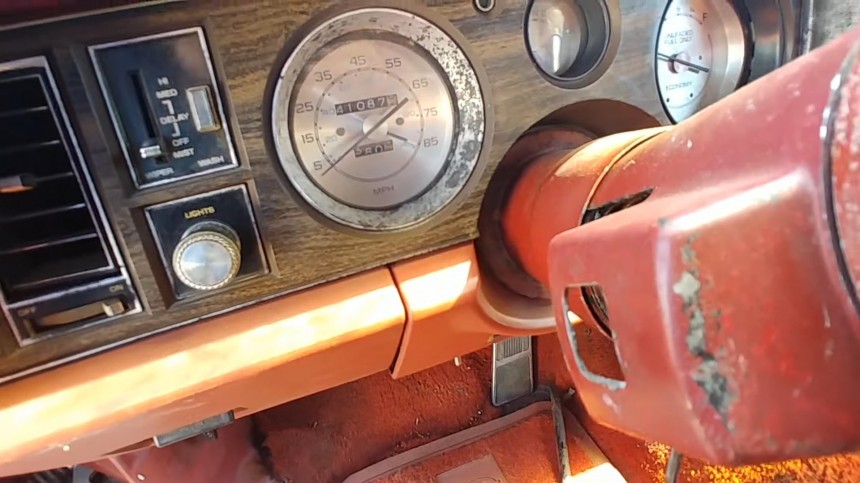The Buick Riviera came out in 1963 as a personal luxury car to counter the successful monopoly of the wildly popular Ford Thunderbird, the absolute tyrant of the segment from 1955 onward. The General Motors division’s proposal was the corporate flagship in this niche, and it was received with accolades and standing ovations. However, at the peak of the ‘personal luxury’ fashion in the mid-and late-seventies, the Riviera fell into one of the most miserable periods of its entire 35-year lifespan.
The luxurious Buick was never a real counter-candidate for the Thunderbird, with production numbers peaking at just under 68,000 in 1985. By comparison, the rival from FoMoCo had nearly twice that (126,000 examples), and that was a bad year for the Blue Oval. Side note: the T-Bird’s golden hour came in 1978, with over 333,000 luxo-barges assembled.
The Riviera wasn’t playing in the same league, but the seventies were a downslide of geological proportions. Between 1974 and 1978, the nameplate averaged less than 22,000 copies per year, with a low of 17,306 in 1975 and a high of 26,138 in 1977. Don’t be fooled by this seemingly out-of-sequence performance: in 1978, the Riviera sold only 20,535 automobiles.
The bump from 1977 can partly be attributed to a change in design. Still, the sad truth is the Riviera was a badge-engineered LeSabre by then, and customers could not forgive that. Initially, the personal luxury Buick stood out from the crowd precisely for its outrageously appealing styling. In 1977, the boxy lines that had become a trait of American motoring triumphed over the strong personality of the Riviera.
The fifth generation of the stand-out Buick debuted in 1977 and concluded at the end of the following year. The 77-78 Rivieras were fine cars but lacked the distinction that drew the line between the ‘best’ and the ‘rest.’ It was a good automotive product but didn’t instill that ‘fine car’ feeling its customers had traditionally fallen for.
The shift from its E-body platform (General Motors E-body, not the famous Mopar rig for the Dodge Challenger and third-gen Plymouth Barracuda) to the smaller body-on-frame B-body was perceived as a downgrading of the Riviera. Truth be told, the LeSabre and the Riviera weren’t spitting images of one another (like, say, the aforementioned Chrysler twin cousins), but the differences were so subtle that it was hard to tell them apart if one or the other were to drive by.
The most prominent Riviera features were the more intricate grille and front fascia, the vaulted quarter panels, and a padded landau top (complete with opera windows). Except for the elaborate grille, all preceding elements are still visible on this crusher-candidate 1977 Buick Riviera lingering in a coma in a pick ‘n’ pull yard in North Texas.
Despite the heatwave, Benny Sanchez from Classic Ride Society ventured into the yard and stumbled upon this beaten example sitting on rims, as three of its own are gone. It’s not that far gone to call it a lost cause, but it has a fair share of dents and dings. The interior doesn’t appear to have had any ‘rodent condominium’ repurposing at some lost point in time. However, the steering column has lost the helm and some levers (fortunately, those parts are still inside the cabin, on the floor).
The milometer reads 41,078 miles (66,108 km), and that speedometer is a sure telltale of the Malaise, with its 85-mph top value (137 kph). One of the non-sensical federal decisions made to combat the energy crunches spurred by geopolitical upheavals in the Middle East was to impose a national speed limit of 55 mph (80 kph) in 1973. It didn’t work as intended, as the gasoline economy didn’t reflect the lower traveling speeds (mostly because drivers didn’t obey the law).
The government then had another briliant idea – cap the speedometers at 85, beginning in 1979. General Motors was always close to the federal authorities. Hence, the corporation introduced mandated features one year earlier than the laws declared. In this Riviera’s case, it was two years ahead – I mean, don’t tell me that a 403-cubic-inch V8 mated with a three-speed Turbo-Hydramatic transmission couldn’t go faster than 85!
In this example, the 6.6-liter V8 (sourced from Oldsmobile) with a four-barrel carburetor was not standard but an extra-cost option. It was rated at 185 net hp (188 PS) and 320 lb-ft (434 Nm). The rear axle had three gearing options: the standard 2.41 (perfect for higher top speeds) and a 3.08 alternative. There was also a special gearing (2.56:1) reserved for high altitudes.
The base price for a 1977 Buick was $7,385, over two large over the Buick LeSabre, and just $352 above the Electra Limited Coupe. However, the overwhelming majority of Rivieras didn't come in stock form. In fact, most of them jumped the gun big time with the addition of air conditioning.
Only 0.2 percent of the total 1977 production had no cooling equipment. 99.8% were equipped with the $539 add-on. Another popular feature was the vinyl roof, priced at $196 and ordered by 98.6% of buyers, slightly more than those who asked for power seats (95.45%).
The Riviera wasn’t playing in the same league, but the seventies were a downslide of geological proportions. Between 1974 and 1978, the nameplate averaged less than 22,000 copies per year, with a low of 17,306 in 1975 and a high of 26,138 in 1977. Don’t be fooled by this seemingly out-of-sequence performance: in 1978, the Riviera sold only 20,535 automobiles.
The bump from 1977 can partly be attributed to a change in design. Still, the sad truth is the Riviera was a badge-engineered LeSabre by then, and customers could not forgive that. Initially, the personal luxury Buick stood out from the crowd precisely for its outrageously appealing styling. In 1977, the boxy lines that had become a trait of American motoring triumphed over the strong personality of the Riviera.
The shift from its E-body platform (General Motors E-body, not the famous Mopar rig for the Dodge Challenger and third-gen Plymouth Barracuda) to the smaller body-on-frame B-body was perceived as a downgrading of the Riviera. Truth be told, the LeSabre and the Riviera weren’t spitting images of one another (like, say, the aforementioned Chrysler twin cousins), but the differences were so subtle that it was hard to tell them apart if one or the other were to drive by.
The most prominent Riviera features were the more intricate grille and front fascia, the vaulted quarter panels, and a padded landau top (complete with opera windows). Except for the elaborate grille, all preceding elements are still visible on this crusher-candidate 1977 Buick Riviera lingering in a coma in a pick ‘n’ pull yard in North Texas.
The milometer reads 41,078 miles (66,108 km), and that speedometer is a sure telltale of the Malaise, with its 85-mph top value (137 kph). One of the non-sensical federal decisions made to combat the energy crunches spurred by geopolitical upheavals in the Middle East was to impose a national speed limit of 55 mph (80 kph) in 1973. It didn’t work as intended, as the gasoline economy didn’t reflect the lower traveling speeds (mostly because drivers didn’t obey the law).
The government then had another briliant idea – cap the speedometers at 85, beginning in 1979. General Motors was always close to the federal authorities. Hence, the corporation introduced mandated features one year earlier than the laws declared. In this Riviera’s case, it was two years ahead – I mean, don’t tell me that a 403-cubic-inch V8 mated with a three-speed Turbo-Hydramatic transmission couldn’t go faster than 85!
The base price for a 1977 Buick was $7,385, over two large over the Buick LeSabre, and just $352 above the Electra Limited Coupe. However, the overwhelming majority of Rivieras didn't come in stock form. In fact, most of them jumped the gun big time with the addition of air conditioning.
Only 0.2 percent of the total 1977 production had no cooling equipment. 99.8% were equipped with the $539 add-on. Another popular feature was the vinyl roof, priced at $196 and ordered by 98.6% of buyers, slightly more than those who asked for power seats (95.45%).





















































